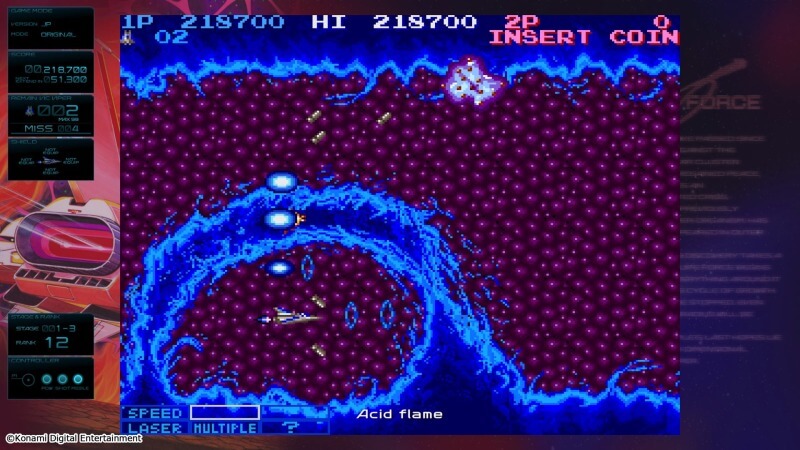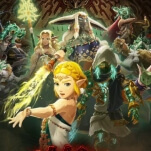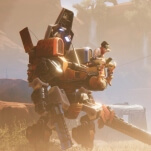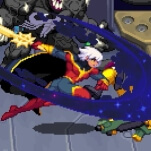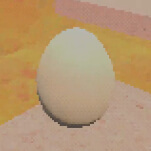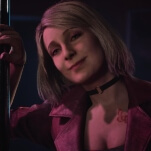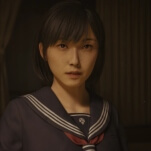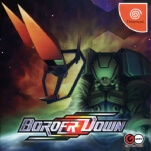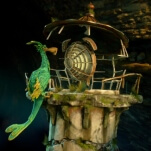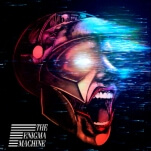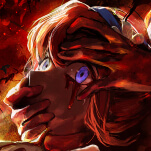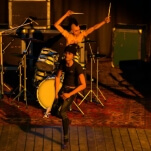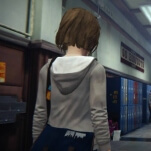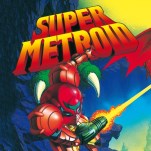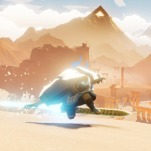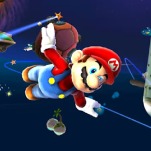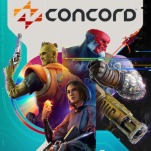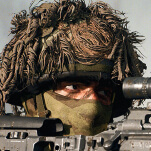Konami’s Shoot ‘Em Up History Endures with the Excellent Gradius Origins
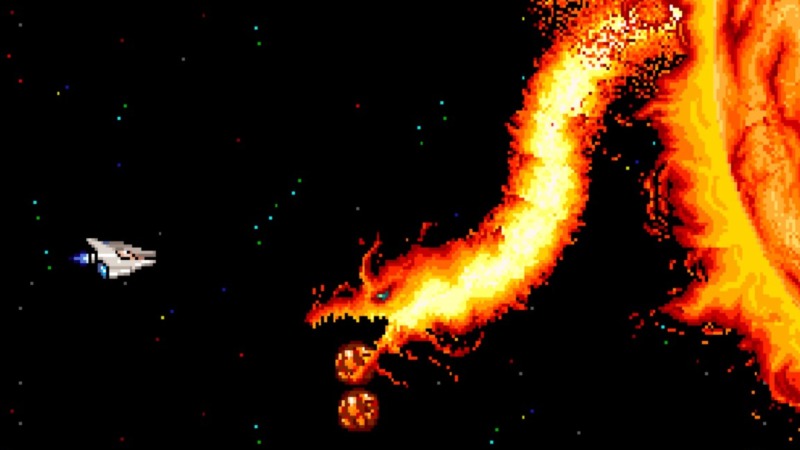
Konami has made dozens upon dozens of shooting games in their decades of development and publishing, but unless you were there for it—or are devoted to Hamster’s Arcade Archives series—then you might not know as much. And that’s because almost all of those STG were released between 1981 and 1999, with the megapublisher returning to the genre on only the rarest of occasions after the turn of the century.
It’s not that Konami never makes a new shoot ‘em up, so much as it used to be a constant. And despite the revival of the genre both among major publishers and on the indies over the last decade-plus, Konami has mostly bowed out of those proceedings, other than some re-releases of their own and, again, a whole lot of games that came out again through Arcade Archives.
An STG is what put them on the map in the first place. Scramble, released in arcades in 1981, was both innovative and Konami’s first major hit: it had forced scrolling, which was new to the genre and not the norm for games in general—please remember how close to the release of Space Invaders 1981 was—and distinct levels, which was also a relatively new idea in ‘81, as it was a major selling point for Nintendo’s Donkey Kong later that same year.
Three major franchises created by Konami in the ‘80s were shoot ‘em ups, with Gradius, TwinBee, and a parody spin-off of the former, Parodius, all arriving between 1985 and 1988. These series were all popular enough and important enough to Konami that they then received ports to pretty much every conceivable platform, games in other genres, or both. Gradius not only had MSX-exclusive Gradius games, but also ones made for the Game Boy, and ports for the Famicom and NES that were developed specifically with the strengths of that hardware in mind. Cosmic Wars is a tactical space warfare game set in the Gradius universe, Moai-kun is a platformer featuring everyone’s favorite statue head found in every Gradius title, and let’s not forget the aborted plans in the ‘90s for a WipeOut- and F-Zero-style battle racing game featuring Gradius’ ship, the Vic Viper—Konami felt this franchise could play host to whatever kind of game they felt like making. TwinBee’s cute-em-up characters ended up with an anime, a radio drama, multiple manga, appeared in a whole bunch of unrelated Konami games just because, and had their own attempts at other genres, including a killer platformer that never made it to North America, as well as an RPG.
While their shoot ‘em ups didn’t generate the same kind of sales that their home console pillars did—think Pro Evolution Soccer, Metal Gear Solid, Castlevania, and Power Pros—they were still vital to Konami’s success in the arcades. And success in the arcade used to matter quite a bit! As the business shifted more and more toward homes, however, Konami did, too. Shoot ‘em ups were no longer a key part of their structure—even as they acquired another player in the space in Hudson Soft—and the rate at which they released new STG dropped precipitously. Gradius V, sure, a collection of shooters here and there, the creation of Otomedius—that’s “Otome” and “Gradius” in case it didn’t click for you right away—but otherwise, things were quiet.
And even with Konami turning their back on the genre for almost the entirety of this century, there were already so many Konami shoot ‘em ups out there that Hardcore Gaming 101 kicked off their multi-volume look at the games within the genre with a book dedicated entirely to their STG output. It’s over 150 pages long! It covers over 60 Konami shooters! It was released a decade ago, and there’s basically no need to update it, because Konami hasn’t added to their legacy much in this space since.
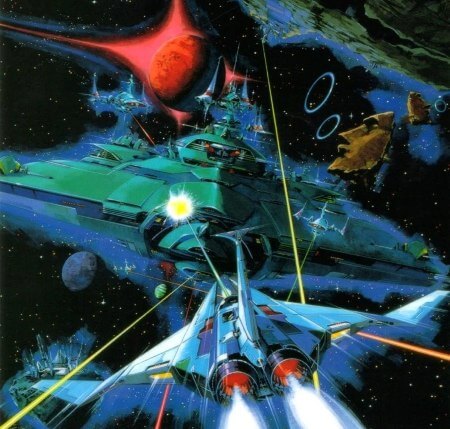
The August release of Gradius Origins changes that, however. The collection is almost entirely re-releases of Gradius games Konami put in arcades between 1985 and 1999 (as well as a previously unreleased variant of Gradius III), with one major exception: Salamander III. That game is entirely new. And it’s a good one.
While new, it’s not meant to feel like it came out in 2025. Instead, developer M2—also responsible for the rest of Gradius Origins—designed the game in the present as if it were a long-lost arcade game from the late ‘90s. As its predecessor, Salamander 2, was released in 1996, and Gradius IV was an early 1999 title, visually and in terms of design elements, you’re supposed to act as if Salamander III fit right in between those two, and post Gradius Gaiden on the Playstation.
Which is why there’s a doubling down on some of the design elements of Salamander 2 that define that series much more than Gradius, as well as including what had been a Gradius Gaiden-exclusive ship in the series: the Jade Knight/Gray Layer, and its extremely powerful (if you know how to use it) pulsing round laser, which fires off concentric rings from the ship and options, and requires you to get up close and personal to bosses when it’s time to shoot the core.
Salamander III doesn’t attempt to innovate in a meaningful way, but is instead just a new Salamander game that seems like it exists in part because there hasn’t been one in nearly three decades. How it goes about its design, though, still makes it plenty enjoyable. Or another way to put it is that if you’re a person who was planning on getting Gradius Origins, then you’re going to be happy with Salamander III.
-

-

-

-

-

-

-

-

-

-

-

-

-

-

-

-

-

-

-

-

-

-

-

-

-

-

-

-

-

-

-

-

-

-

-

-

-

-

-

-

